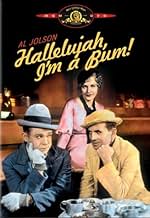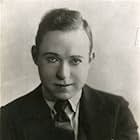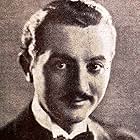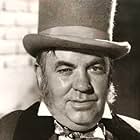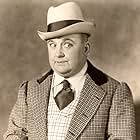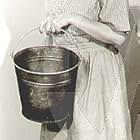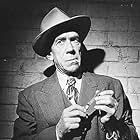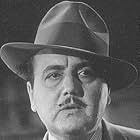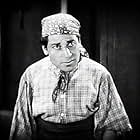A New York tramp (Jolson) falls in love with the mayor's amnesiac girlfriend after rescuing her from a suicide attemptA New York tramp (Jolson) falls in love with the mayor's amnesiac girlfriend after rescuing her from a suicide attemptA New York tramp (Jolson) falls in love with the mayor's amnesiac girlfriend after rescuing her from a suicide attempt
Ernie Adams
- Man Thrown out of Apartment Building
- (uncredited)
Vince Barnett
- Assistant
- (uncredited)
Ted Billings
- Bum with Violin
- (uncredited)
Heinie Conklin
- Bum
- (uncredited)
Gino Corrado
- Mayor's Chef
- (uncredited)
John George
- Bum
- (uncredited)
Harold Goodwin
- Len
- (uncredited)
- Director
- Writers
- All cast & crew
- Production, box office & more at IMDbPro
Storyline
Did you know
- TriviaHallelujah, I'm a Bum (1933), retitled The Heart of New York, was the first Hollywood feature film to be shown on regularly scheduled USA television. It was broadcast by W2XBS, New York City, on 5 July 1939, two months after their inauguration of regular service which had begun on 30 April 1939 with the opening of the New York World's Fair. It is one of over 200 titles in the list of independent feature films made available for television presentation by Advance Television Pictures announced in Motion Picture Herald 4 April 1942. At this time, television broadcasting was in its infancy, almost totally curtailed by the advent of World War II, and would not continue to develop until 1945-1946.
- GoofsA cameraman's arm is reflected in the partially opened window of the Mayor's limousine when the Mayor meets Bumper at the casino.
- Alternate versionsA re-dubbed and edited version (for UK release) called "Hallelujah, I'm A Tramp" frequently turns up on television. In this version the soundtrack is momentarily erased whenever the word 'bum' is sung!
- ConnectionsFeatured in The All Talking, All Singing, All Dancing Show (1973)
Featured review
I'm not much of a fan of musicals but have always been partial to the stylish, sophisticated and sometimes dazzlingly experimental examples of the genre that emanated during the early years of Talkies - the Lubitsch films, Rouben Mamoulian's LOVE ME TONIGHT (1932) and also the delightful French films of Rene' Clair.
To these I can now add this Al Jolson vehicle directed by one of the great exponents of American cinema (at his best during the 1930s, though he continued to work steadily till 1962). This was only my 3rd Jolson film - not counting THE JOLSON STORY (1946), the first of two biopics made while he was still living!; the others were his history-making debut THE JAZZ SINGER (1927), the pioneering Sound picture, and ROSE OF WASHINGTON SQUARE (1939) - actually, his penultimate film, by which time he had been relegated to supporting roles!
Anyway, the film under review here is something of an oddity in that, not only does it present such humdrum fare as the Great Depression through the eyes of a cheerful tramp and his 'colleagues', but it also makes use of rhyming dialogue (whch in the trailer included on the DVD is ballyhooed as a new fad, but it obviously couldn't last!) which was perhaps intended as a natural lead into the songs; in fact, rather than by official screenwriter S.N. Behrman (adapting a Ben Hecht story), these lines were written by lyricist Lorenz Hart! Unfortunately, however, the print utilized for the MGM/UA DVD is quite battered with the soundtrack coming off rather muffled as a consequence!!
Still, its essential quality remains intact: while the plot may seem dated and even fanciful today (both its romanticized view of unemployment and the hero's eventual decision to 'reform' on account of a woman), atmosphere and characterization are as charming as ever: Jolson, dubbed by his cronies "The Mayor Of Central Park" truly comes off as larger-than-life here, but he's matched by the great Silent comedian Harry Langdon (in his only notable Talkie role) - as one of Jolson's pals, a politically-savvy street-cleaner named Egghead(!) who's picked on by the other tramps because he has a job - and Frank Morgan as the real Mayor of New York (whose life Bumper, the Jolson character, had saved during a protest).
The film also involves a three-way romance between Jolson, Morgan and lovely leading lady Madge Evans: she's the latter's girlfriend but, having incurred his distrust, leaves him intent on committing suicide; she's saved by Jolson and, now an amnesiac, Evans is cared for by him who, in order to pay the rent of her new lodgings, even asks his friend Morgan for a job in a bank!; however, noticing Morgan's own concern about his missing girlfriend, Jolson tries to console him...until he realizes just who she is, after which he decides to re-unite the two of them and himself goes happily back to a life on the streets!
Many films have dealt with the theme of the Great Depression but this one's certainly its most original treatment while also being, along with the marvelous screwball comedy MY MAN GODFREY (1936), one of the very best.
To these I can now add this Al Jolson vehicle directed by one of the great exponents of American cinema (at his best during the 1930s, though he continued to work steadily till 1962). This was only my 3rd Jolson film - not counting THE JOLSON STORY (1946), the first of two biopics made while he was still living!; the others were his history-making debut THE JAZZ SINGER (1927), the pioneering Sound picture, and ROSE OF WASHINGTON SQUARE (1939) - actually, his penultimate film, by which time he had been relegated to supporting roles!
Anyway, the film under review here is something of an oddity in that, not only does it present such humdrum fare as the Great Depression through the eyes of a cheerful tramp and his 'colleagues', but it also makes use of rhyming dialogue (whch in the trailer included on the DVD is ballyhooed as a new fad, but it obviously couldn't last!) which was perhaps intended as a natural lead into the songs; in fact, rather than by official screenwriter S.N. Behrman (adapting a Ben Hecht story), these lines were written by lyricist Lorenz Hart! Unfortunately, however, the print utilized for the MGM/UA DVD is quite battered with the soundtrack coming off rather muffled as a consequence!!
Still, its essential quality remains intact: while the plot may seem dated and even fanciful today (both its romanticized view of unemployment and the hero's eventual decision to 'reform' on account of a woman), atmosphere and characterization are as charming as ever: Jolson, dubbed by his cronies "The Mayor Of Central Park" truly comes off as larger-than-life here, but he's matched by the great Silent comedian Harry Langdon (in his only notable Talkie role) - as one of Jolson's pals, a politically-savvy street-cleaner named Egghead(!) who's picked on by the other tramps because he has a job - and Frank Morgan as the real Mayor of New York (whose life Bumper, the Jolson character, had saved during a protest).
The film also involves a three-way romance between Jolson, Morgan and lovely leading lady Madge Evans: she's the latter's girlfriend but, having incurred his distrust, leaves him intent on committing suicide; she's saved by Jolson and, now an amnesiac, Evans is cared for by him who, in order to pay the rent of her new lodgings, even asks his friend Morgan for a job in a bank!; however, noticing Morgan's own concern about his missing girlfriend, Jolson tries to console him...until he realizes just who she is, after which he decides to re-unite the two of them and himself goes happily back to a life on the streets!
Many films have dealt with the theme of the Great Depression but this one's certainly its most original treatment while also being, along with the marvelous screwball comedy MY MAN GODFREY (1936), one of the very best.
- Bunuel1976
- Sep 17, 2006
- Permalink
Details
- Release date
- Country of origin
- Language
- Also known as
- Happy-Go-Lucky
- Filming locations
- Pacific Palisades, Los Angeles, California, USA(Central Park scenes)
- Production companies
- See more company credits at IMDbPro
- Runtime1 hour 22 minutes
- Color
- Aspect ratio
- 1.37 : 1
Contribute to this page
Suggest an edit or add missing content



